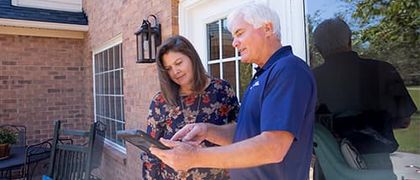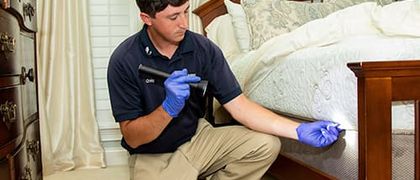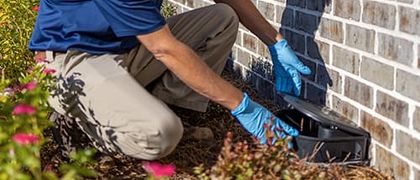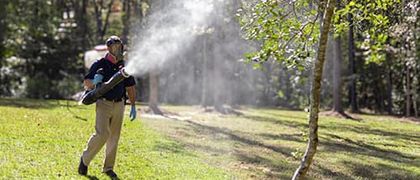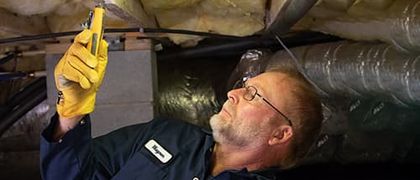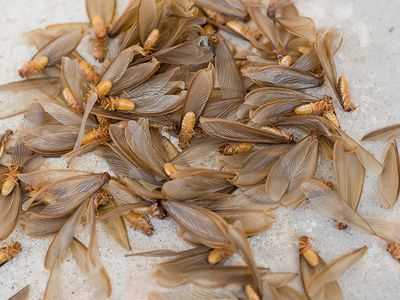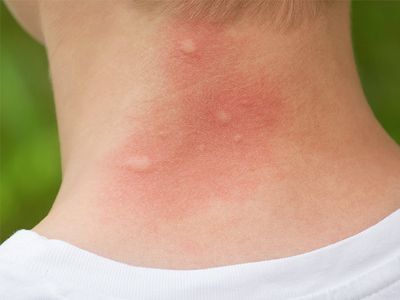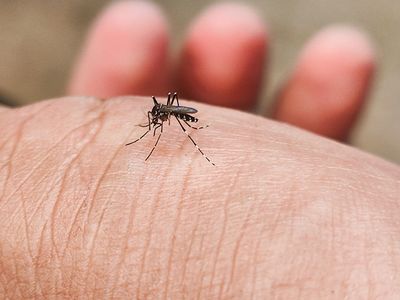What do yellow jackets look like?
Yellow jackets are typically black and yellow, with a well-defined pattern of alternating bands on their abdomen. These wasps have slender waists and are about ½-inch long.
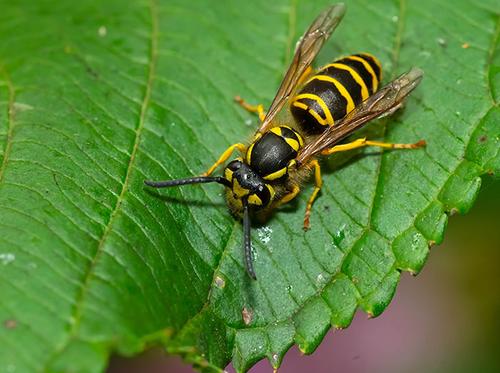
When are yellow jackets most active?
What does a yellow jacket nest look like?
When it comes to a yellow jacket nest, there’s a good chance you won’t be able to see it. That’s because it’s underground, inside walls, or other enclosed spaces. In that case, you’re only indication may be a small hole in the ground. You may also observe yellow jackets flying in and out of a certain area. Aerial nests are football-shaped and have an entrance at the bottom. They are made from a papery material yellow jackets create by chewing up wood fibers.
Where do yellow jackets nest?
Yellow jackets nest in protected cavities, often at ground level. Abandoned rodent burrows, holes in the lawn, and tree stumps are common places to find yellow jacket nests but they can also be found in shrubs, dense vegetation, in tree cavities, and on or in man-made structures.
Are yellow jackets dangerous?
Yes, yellow jackets should be considered a threat to health and safety because they can be aggressive, and their stings can cause mild to severe allergic reactions in some individuals. What’s more, yellow jackets are able to sting multiple times and will often attack as a group.
How do I treat a yellow jacket sting?
If you’re stung by a yellow jacket and are experiencing severe symptoms, seek medical attention right away. When it comes to treating a yellow jacket sting, the CDC recommends the following steps:
- Wash the sting site with soap and water
- Remove the stinger using gauze or by scraping a fingernail over the area (do not squeeze or use tweezers)
- Apply ice to the site
How long will yellow jackets chase you?
As we mentioned above, yellow jackets are very aggressive and will chase a threat for several yards.
Can yellow jackets damage my home?
While yellow jackets don’t usually damage homes, they do build nests in attics or in walls and may chew on drywall and other materials in order to create their nests. Additionally, if a nest rots or decomposes indoors, it can damage wood that is already weak.
What do yellow jackets eat?
Adult yellow jackets feed on plant nectar, fruit, and other foods that are rich in sugars and carbohydrates. Since they also need high-protein foods to feed their larvae, they will search for insects such as flies and small arthropods. They will also eat spiders.
What should I do if I encounter a yellow jacket nest?
If you encounter a yellow jacket nest on your property, or worse, inside your home, remain calm and do not disturb the nest. The best thing you can do is back away and call a local pest control company for assistance.
How do I get rid of yellow jackets?
To remove yellow jacket nests and the stinging insects from your property, reach out to Harris Pest Control right away. Our locally owned and family-operated pest control company has been helping property owners in the Pee Dee and Grand Strand regions for over 50 years resolve their stinging insect problems and are ready to help you. When you choose our experienced team, we’ll send out a pest control specialist to complete a free pest inspection and then, based on the
findings, we’ll recommend a treatment plan specifically for your situation.
How can I prevent a yellow jacket problem?
To prevent yellow jackets from nesting in or on your home, or elsewhere on your property, we recommend keeping an eye out for nests, sealing all potential entry points, sealing trash cans, cleaning up outdoor eating areas, and filling in holes in your yard. For even greater protection against yellow jackets and other stinging insects, consider signing up for one of Harris Pest Control’s home pest control plans!








